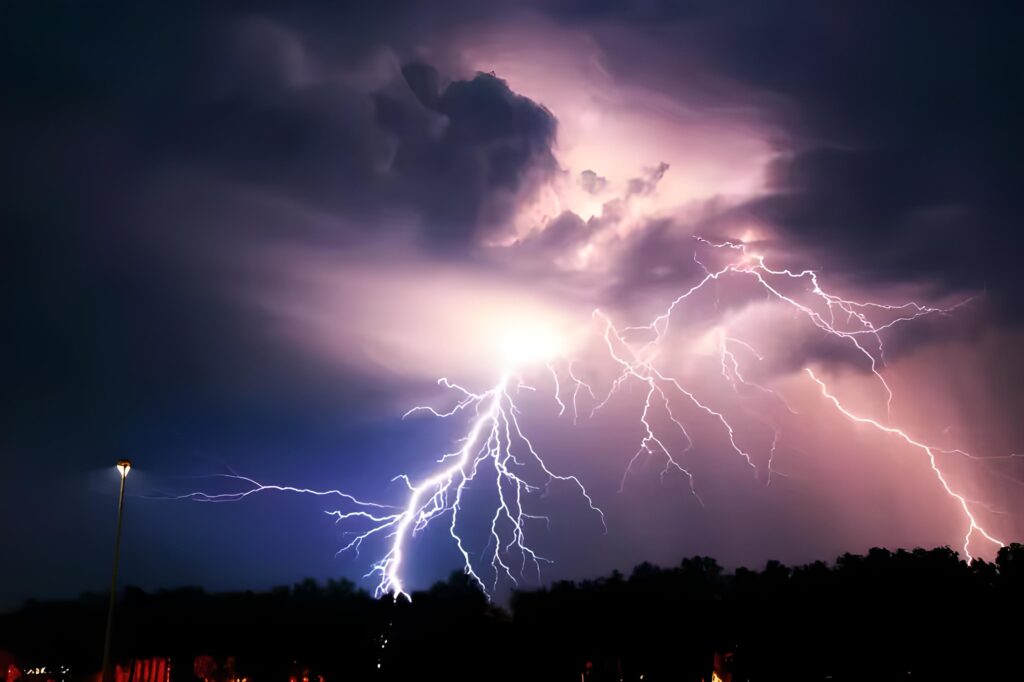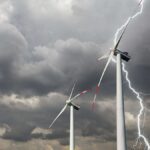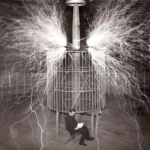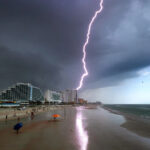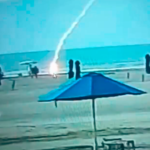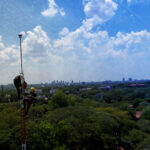Last Saturday, January 6, the city of Villa Mercedes, in the province of San Luis, Argentina, witnessed a shocking event that highlighted vulnerability to the unpredictable force of nature. Gabriel Jonathán Berón, a young man who was seeking shelter from the rain with his friends under a tree in a public square, was suddenly affected by lightning that struck the tree and, consequently, him. Despite the serious injuries, rapid medical attention has allowed Gabriel to be currently stable, although with burns on 20 percent of his body.
This incident revealed an alarming reality: a significant percentage of lightning strikes occur most frequently in public spaces such as squares, beaches and parks. Electricity always seeks the path of least resistance, and these places are often filled with high points, such as trees and power lines, that provide ideal paths for atmospheric discharges.
It is imperative to take measures to protect public spaces against atmospheric discharges.
Safety measures against electrical storms:
- Seek refuge in solid buildings: If possible, sheltering in sturdy buildings or enclosed vehicles provides an additional layer of protection from lightning.
- Avoid tall, isolated trees: Do not seek shelter under tall, isolated trees reduces the risk of being affected by atmospheric discharges.
- Descends from elevated areas: Going down hills and elevated areas significantly reduces the chance of being struck by lightning.
- Avoid metal objects: Staying away from metal objects such as fences, posts, and metal structures helps prevent accidents during thunderstorms.
- Do not stay in open spaces: Seeking shelter in closed places is always preferable to avoid being struck by lightning.
These specific measures are essential to ensure personal safety during thunderstorms, providing clear and practical guidelines to minimize risks.
The definitive solution
Historically, it was believed that it was impossible to avoid a lightning strike, and extreme caution was the only option. However, technology has advanced, and with it, the ability to protect against thunderstorms. In this context, our star product, the CMCE, has arrived to change that perception.
The installation of the CMCE in the maximum number of places possible is presented as an effective solution to prevent similar tragedies in the future. This device acts as a protective shield, compensating and stabilizing the current of electrical charges in its environment, draining them safely to ground in harmless milliamps.
Our company is committed to the safety of the community and makes available various CMCE models, each one adapted to different types of infrastructure and spaces. There is no excuse to continue taking unnecessary risks during thunderstorms. Protecting our public spaces is an obligation, and the CMCE is the tool that makes the difference.
With these solutions available, installing the CMCE becomes an essential measure to safeguard lives and avoid tragedies like the one Gabriel experienced on that fateful January night. Lightning protection in public spaces is no longer an option; It is a necessity that Sertec S.R.L. is willing to tackle with its advanced technology that prevents lightning formation.
In conclusion, although CMCE technology offers an advanced solution to protect against thunderstorms, it is essential to recognize that we cannot always count on a lightning rod installed in public spaces. In situations where there is no access to this protective technology, it is crucial to follow preventative measures mentioned above to minimize risks during electrical discharges.
Sources: www.abc.com.py


